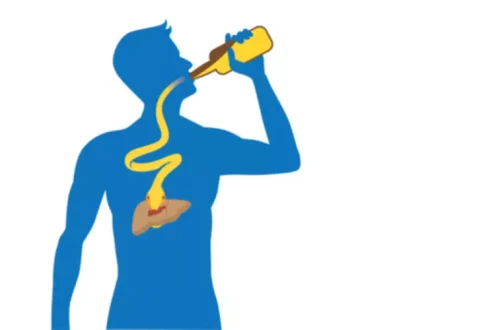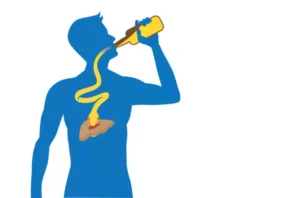There are coping strategies to be learned and skills to outwit cravings, and practicing them not only tames the impulse to resume substance use but also gives people pride and a positive new identity that hastens recovery. The current study’s main goal was to support improvements to existing recovery definitions, and results can indeed do so (as discussed above). Results may support decisions on what areas of functioning should be deemed central, less central, and peripheral to recovery, particularly where empirical research exists on associations between recovery elements and substance use outcomes.
What Is the Drug and Alcohol Addiction Recovery Process?
You will have the most success when you first educate yourself about available treatment types and then find a program that is tailored to your needs. SAMHSA’s Treatment Services Locator can help you find rehab programs near you. You can also reach out to American Addiction Centers (AAC) for free at to explore your recovery options. Studies show that craving has a distinct timetable—there is a rise and fall of craving. In the absence of triggers, or cues, cravings https://yourhealthmagazine.net/article/addiction/sober-houses-rules-that-you-should-follow/ are on a pathway to extinction soon after quitting.
Drugs, Brains, and Behavior: The Science of Addiction
- Other EDs screen patients and offer, as appropriate, brief interventions by clinicians and active linking or referrals to treatment.
- According to the National Institute on Drug Abuse, an estimated 40 to 60 percent of people trying to quit use of drugs, and 50 to 90 percent of those trying to quit alcohol, experience at least one slip up in their first four years of recovery.
- Research has identified relapse patterns in adolescents and adults recovering from addiction.
- Studies show that craving has a distinct timetable—there is a rise and fall of craving.
- Building strengths in domains outside of substance use is consistent with positive psychology approaches to addiction22 and with research suggesting roles for factors such as positive affect28,29 and meaning in life30 in recovery.
- This activity encourages members to celebrate even minor milestones, helping them recognize progress and reinforcing a sense of accomplishment.
Although abstinence remains the dominant paradigm for SUD recovery, findings from this study suggest that PWUM are more concerned with symptom remission than complete abstinence and may be more responsive to less demanding treatment targets. According to the Substance Abuse and Mental Health Services Administration (SAMHSA), recovery is defined as a “process of change through which individuals improve their health and wellness, live a self-directed life, and strive to reach their full potential” (p. 3) 35. It is noteworthy that SAMHSA’s conception of recovery identifies neither substance use nor abstinence as features of recovery and instead underscores the importance of supporting individual autonomy. However, although SAMHSA’s definition of recovery is not abstinence-based, in treatment and recovery spaces in the U.S, it is frequently interpreted this way.
Overdose Prevention
Spirituality can provide a sense of purpose and inner peace in recovery for those interested. This session invites members to explore their spiritual beliefs—whether through mindfulness, religion, or connecting with nature—and discuss how these beliefs can support sobriety. Fast Facts provides 10 of the most important scientifically-grounded facts about recovery.
Making Space for Spirituality While Treating Substance Use Disorders
From the perspective of behavioral economics, the COVID-19 pandemic created a “perfect storm” for SUDs. Research will need to assess the long-term impact of the pandemic on the behavioral economic structures of substance use. As the peer specialist workforce has expanded and peer specialists have moved into new settings, the issue of role clarity has increasingly come up among other professionals involved in SUD treatment and recovery as well as peers themselves. Where you live after completing a treatment program for substance use disorder can be an instrumental step in supporting your recovery.
Centrality thresholds included endorsement by ⩾80% participants and ranking (by endorsement level) within the top 10 of all recovery items. Reoccurrence of use may happen to people who use drugs and can happen even years after not taking the substance. More than anything, reoccurrence of use may be a sign that more treatment or a different method is needed. A routine review of one’s treatment plan may be necessary to determine if another method could be more effective. Substance use disorder (SUD) is defined as a problematic pattern of substance use leading to clinically significant impairment or distress. Education and awareness around the harm of using substances, along with the support of friends, parents, and caregivers, can help prevent SUDs.
Opioid use disorder (OUD)
Creating a fluid, responsive, and more effective recovery-oriented “system” will require greater sensitivity and understanding of the strengths and benefits of each, including rigorous cross-site evaluations for professional RSS strategies. Research should determine the efficacy of peer supports including peer recovery support services, recovery housing, recovery chronic disease management, high school and collegiate recovery programs, and recovery community centers through rigorous, cross-site evaluations. In keeping with the need to support long-term remission and recovery from substance use disorders, social and recreational entities are emerging that make it easier for people in recovery to enjoy activities and social interaction that do not involve alcohol or drugs. However, no research has yet examined whether participation in these activities produces a significant benefit beyond what might be obtained from other RSS. Conducts counseling services; facilitates and implements education and counseling support groups, individual alcohol and drug assessments with students. Presents/assists with alcohol and drug prevention education and training programs, as well as post-vention and recovery support education and stigma reduction.
Identify other factors in your life—relationships, work—that can help take the focus off addictive behaviors. Neuroscientist Adi Jaffe, Ph.D., who himself recovered from addiction, outlines five steps. Planning in advance a way out of high-risk situations—whether an event, a place, or a person—helps support intentions in the face of triggers to use. One tried to enter my room; another tried to enter the bathroom where I was showering. After I aired this out during a group meeting, the women unanimously asked for me to be housed with them, a request they made several times. University Core Competencies definitions may be found on the Human Resources website and in the staff performance management system.
The “opioid crisis” has dominated drug conversations for at least the past decade, while … As we neared the end of our stays and our counselors prepared to transfer us to recovery housing, the facilities they contacted would only house trans residents according to gender assigned at birth. My counselor made it clear she wasn’t going to help, so I refused to go and said I just wanted to go directly home. I’ve had some positive experiences, but trans people are basically left to try to recover on our own. A caseworker who worked with LGBTQ+ populations referred me to an organization that owns several recovery houses in the Philadelphia area.
Faith-Based Recovery Support
Areas of executive function regain capacity for impulse control, self-regulation, and decision-making. Gaining the skills to avoid relapse is a necessary part of the recovery process. At least equally necessary is developing in a positive direction out of the addiction.
Under this new paradigm, a clear, specific definition of recovery becomes foundational to guiding SUD services delivery; evaluating SUD prevention and intervention; studying predictors of recovery in the community; and communicating with the public. Accordingly, the current paper aims to support formal definitions of recovery by systematically identifying core elements of recovery that are central to those in recovery and shared regardless of subgroup or pathway. ” These percentages translate to roughly 25 million United States adults being in remission.29 It is not yet known what proportion of adolescents defines themselves as being in recovery. Counselors may have legal, ethical, or programmatic considerations that prevent them from working on substance use or recovery issues with clients who have nonabstinence recovery goals,345 perhaps based on type of substance. A recovery-oriented approach to this situation would be for the counselor to advise the client that recovery has many pathways and to refer the client to another provider who can accept nonabstinence goals or to a program or organization that offers PSS for recovery from problematic substance use. Group therapy plays an essential role in substance abuse recovery, providing a space where individuals can share experiences, learn new coping strategies, and support each other’s journey to sobriety.
Recovery may involve medication to help with cravings and withdrawal as well as different forms of therapy. It may require checking into a rehabilitation facility.45 Recovery can be challenging, but it is possible. Not practicing self-care, including physical self-care like healthy sleeping374 and eating. Increasing social supports (e.g., through attending substance-free gatherings together). Enable them to spend less time during appointments going over standard but clinically important educational content by allowing clients to review this material asynchronously. Integration can lead to improved health outcomes through better care coordination.
general health, sleep, cardiovascular health (e.g., reduced risk of heart disease, stroke, arrhythmia), immune health (e.g., the body’s ability to fight off disease-causing bacteria and viruses), appetite (adequate nutrition), and energy level. Harms related to methamphetamine use are a growing public health problem. In 2021, 1.6 million Americans met the criteria for stimulant use disorder (methamphetamine type), hereafter called methamphetamine use disorder (MUD; 1). Recent research indicates methamphetamine overdose mortality and patterns of risky use have increased in recent years, particularly for those with socioeconomic risk factors and comorbidities 1.
If you need to talk to someone about getting help for a substance use disorder, contact American Addiction Centers to speak with a caring admissions navigator who can answer your questions and help you quickly check your insurance benefits to see which facility is right for you. There are also free alcohol and drug abuse hotline numbers you can call. These support groups and their recovery Steps provide social support to people when they need it. This support can help people stay off drugs or alcohol and make other positive changes in their lives, according to the National Institute on Drug Abuse.
The word recovery itself has many definitions within psychological literature (Worley, 2016). Despite Sober Houses Rules That You Should Follow the inevitable range of definitions, all reference a form of change or growth. The American Society of Addiction Medicine (2013) defines recovery as “the process of sustained action that addresses the biological, psychological, social, and spiritual disturbance inherent in addiction” (p. 2).

.jpg)
.jpg)




